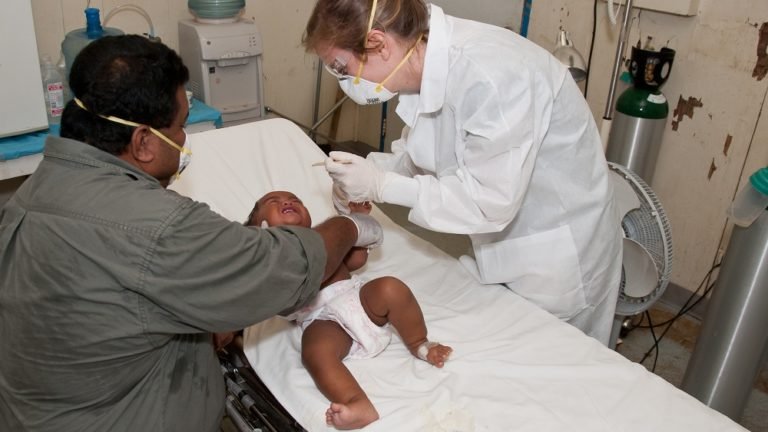A critical aspect of patient-centered care is patient safety.
Hospitals face tremendous pressure to deliver high-quality services cost-effectively while ensuring their patients receive the best care. To improve patient care, hospital administrators and health care providers must work together to find solutions for better patient care outcomes and safety.
Medical errors are a result of clinicians excluding the patients from patient safety protocols. Properly engaging the patients and keeping them informed about their care plan can improve health care quality. Patients’ quality of life is improved once they are involved in their care, and health care professionals work in partnership with their families.
With that in mind, here are eight ways a medical facility can improve patient care.
1. Well Trained Healthcare Professionals
With time the healthcare industry is undergoing considerable changes that require cost-effective treatments without compromising the quality of patient care. Digital transformation has changed the way patients are seeking treatment. It has become crucial that healthcare professionals learn skills that deliver high-quality patient care while meeting the organizations’ goals.
Healthcare professionals must stay updated and learn new skills to improve patient care. Patient care is a top priority that requires more than mere medical knowledge. As a healthcare provider, you should be able to find cost-effective ways to deliver quality health care. For better patient outcomes, programs such as ce solutions can help enhance your staff’s level of learning that will eventually improve the patient’s quality of life.
2. Telemedicine
From chronic condition management to post-hospitalization follow-up care, telemedicine has transformed the health care industry. Telemedicine takes place outside the busy office environment resulting in more face-to-face interaction. It improves patient outcomes by removing hurdles like the cost, transportation, and time that keep patients from getting the care they need.
Telemedicine allows individuals to get essential care without the risk of these patients getting exposed to other viruses and bacteria. Self-management, continuity of care, and decreased cost of care are some beneficial aspects of telemedicine.
The goal of telemedicine is to provide access to quality care without the expense of traditional delivery channels.
3. Provide Emotional Support
One aspect of improving patient experience is providing emotional support to patients in difficult situations. Helping patients deal with their symptoms improves the healing process. When health care providers meet their patients’ psychological and emotional needs, it helps them feel safe and empowered.
Strong communication skills can help decide when a patient wants to talk about their feelings or an illness. Enhancing communication skills can help navigate discussions smoothly. Listening to patients and understanding their values contributes to providing the emotional support that patients need.
Addressing the emotional aspects of patient health can promote a healthy mind and reduce the length of stay after a treatment. It contributes to a speedy recovery.

4. Creating a safe patient experience
A positive patient experience is not only about making the patient happy. Preventing harm and ensuring patient safety is integral to any patient’s health and well-being. Healthcare providers should focus on delivering patient-centered care to create a safe environment for patients. It can include checking up on patients on an hourly basis to ensure they have all they need.
Through various trainee programs, organizations can gain feedbacks and recommendations for improvement that can help enhance the patient experience. Training employees and ensuring they feel well-equipped to do their jobs can reduce employee turnover and promote a positive patient experience.
5. Care for hospital Environment
To prevent any adverse patient safety events, hospitals must keep a clean environment. Patients are at a high risk of getting exposed to viruses and bacteria in the hospital. Facility staff should make sure that all areas in the hospital are sanitized to protect patients from any unhygienic conditions.
Looking after hospital environments is more than just ensuring cleanliness. Caring for the hospital environment requires enforcing quiet hours to ensure patients get the proper rest they need for recovery.
6. Improvement of Access to Care
Patient outcome is affected by access to care. To get the right results, patients must have access to care at the right time. Factors like living environment and education play a significant role in promoting patient care. To improve patient outcomes, health care professionals must implement appropriate patient care technology that will encourage compliance with the care plan.
Improving access care is not only about the number of visits to primary care physicians or going for early detection screening. It is about the availability of access to care. Nowadays, emerging onsite clinics and robust workplace wellness programs are a convenient route to accessible care.
Health care providers are working towards providing convenient and connected care for patients with limited access.

7. Engagement of Family Members
Participation of patients and family members in the health care decision-making process can facilitate patients’ recovery. As care plans become more collaborative, medical professionals can focus more on patient-centered care communication. To ensure that patients receive appropriate care at home, they can ask family members about their roles and assign specific duties to each member.
To perform simple healthcare tasks, family members must go through a training program to learn how to provide care to patients when discharged from the hospital. Patient safety requires engaging patients as well as family members when it comes to developing patient-centered strategies.
It further helps health care providers meet patients’ needs and alleviate any potential harm.
8. Helping patients with Management of Medication
Medications affect every individual patient differently. Teaching patients management of drugs and alternative pain management options can prevent adverse effects.
Patients are often unable to manage their medications. Giving each patient and family member a complete and accurate list of prescribed medication can reduce risks to a patient’s health. Medication management involves making patients understand the crucial role they play in their own care and directing them to use their medication correctly. This may include timings, doses and the responsibility to inform the doctor if any unusual side-effect occurs.
Final Thoughts
Patient care is not only about the care patients are receiving at a medical facility. It’s about considering all the aspects that contribute to a positive patient experience. From providing emotional support to helping patients manage their medication, healthcare professionals can provide quality care to every patient. With the right skills and technological advancements, patient care will surely improve in years to come.








